I have never actually gone into Daphnia Aquaculture in any great detail before. Yes, I've managed to keep the little things going from time to time, outside in a cut-up fashioned tub which I initially set up to attract midge and to harvest their larvae.
After reading quite a bit of literature on the subject, I'm now tentatively embarking on learning how to properly culture this form of live food.
In Northern Ireland we are poorly served by our local aquarist establishments of which we have only three we can use who can actually call themselves true aquarist establishments. None of them stock livefoods, no adult brineshrimp, no tubifex and for the purpose of this article no daphnia. We have to resort to searching out our own breeding grounds or send for supplies to the mainland of which the postal rates negate the last option.
I've been wanting to add to my ever growing livefood culture list for while now and have chosen Daphnia pulex over Daphnia magna due to it's smaller size.
I sent for a clean, disease free starter culture from a guy called Dave who lives not too far away in North Down.
http /www.aquarist-classifieds.co.uk/php/detail.php?cat=51&de=68534
/www.aquarist-classifieds.co.uk/php/detail.php?cat=51&de=68534
He quite happily supplied me with a few cultures along with food (concentrate green algae solution) also included was an algae starter solution which should let me brew my own food for the daphnia if I follow the concise instruction leaflet enclosed.
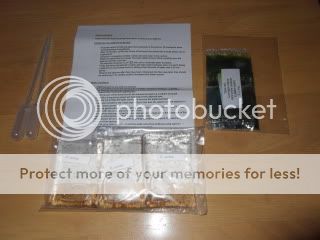


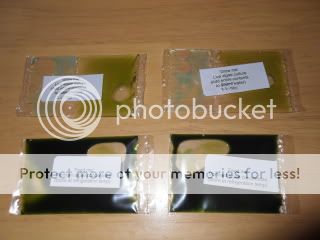
Contents of the D. pulex starter kit
The final home for the D. pulex in the summer months is expected to be a large drum filled with rainwater and pH adjusted like the one below.
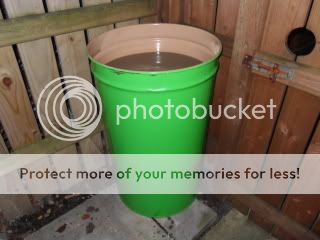
Large drum intended to be the eventual Summer breeding ground for the Daphnia
Given that it's much too cold outside at the moment I have been advised to culture indoors until the weather is more clement. Following the instructions provided with the kit, I will be using a 3ltr Ice Cream carton.
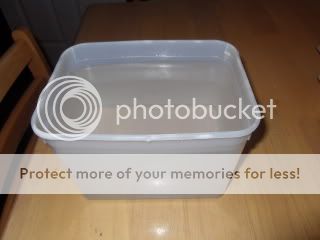
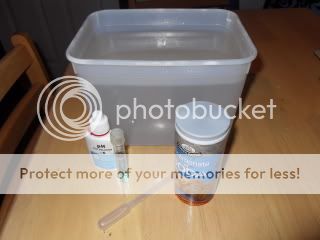
Initial culture vessel, a 3ltr Ice Cream carton. The first thing I needed to do was to adjust the rainwater pH up to 7.2 as advised
Floating the bags of D. pulex was next on the agenda to equalize the temperatures between the bags and the tub, after which the daphnia was carefully poured into some small containers so I could slowly acclimatise and mix some of the water I'd made up with their own culture water.


After around half an hour I reckoned the acclimatisation was complete and the time had come to add the Daphnia to their new provisional home. The instructions concluded that the creatures should be fed immediately. I added enough of the concentrated algae to slightly tinge the water green. Once this has cleared a little I will add further amounts of the algae.


I now need to set up the algae cultures (green water) in 2 litre bottles. I will try to incorporate two culture vessels in my Livefood cupboard as both light and air are already installed this would make things much more convenient.
This is a work in progress and I will add to this article with words and images as the trial progresses. At the moment I am following the instructions provided, as always other folks may do things a little differently but for the purpose of educating myself on the topic I am following whats in front of me.
ATB
BigC
After reading quite a bit of literature on the subject, I'm now tentatively embarking on learning how to properly culture this form of live food.
In Northern Ireland we are poorly served by our local aquarist establishments of which we have only three we can use who can actually call themselves true aquarist establishments. None of them stock livefoods, no adult brineshrimp, no tubifex and for the purpose of this article no daphnia. We have to resort to searching out our own breeding grounds or send for supplies to the mainland of which the postal rates negate the last option.
I've been wanting to add to my ever growing livefood culture list for while now and have chosen Daphnia pulex over Daphnia magna due to it's smaller size.
I sent for a clean, disease free starter culture from a guy called Dave who lives not too far away in North Down.
http
 /www.aquarist-classifieds.co.uk/php/detail.php?cat=51&de=68534
/www.aquarist-classifieds.co.uk/php/detail.php?cat=51&de=68534He quite happily supplied me with a few cultures along with food (concentrate green algae solution) also included was an algae starter solution which should let me brew my own food for the daphnia if I follow the concise instruction leaflet enclosed.




Contents of the D. pulex starter kit
The final home for the D. pulex in the summer months is expected to be a large drum filled with rainwater and pH adjusted like the one below.

Large drum intended to be the eventual Summer breeding ground for the Daphnia
Given that it's much too cold outside at the moment I have been advised to culture indoors until the weather is more clement. Following the instructions provided with the kit, I will be using a 3ltr Ice Cream carton.


Initial culture vessel, a 3ltr Ice Cream carton. The first thing I needed to do was to adjust the rainwater pH up to 7.2 as advised
Floating the bags of D. pulex was next on the agenda to equalize the temperatures between the bags and the tub, after which the daphnia was carefully poured into some small containers so I could slowly acclimatise and mix some of the water I'd made up with their own culture water.


After around half an hour I reckoned the acclimatisation was complete and the time had come to add the Daphnia to their new provisional home. The instructions concluded that the creatures should be fed immediately. I added enough of the concentrated algae to slightly tinge the water green. Once this has cleared a little I will add further amounts of the algae.


I now need to set up the algae cultures (green water) in 2 litre bottles. I will try to incorporate two culture vessels in my Livefood cupboard as both light and air are already installed this would make things much more convenient.
This is a work in progress and I will add to this article with words and images as the trial progresses. At the moment I am following the instructions provided, as always other folks may do things a little differently but for the purpose of educating myself on the topic I am following whats in front of me.
ATB
BigC





